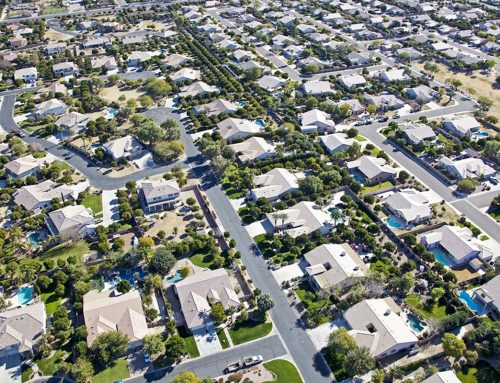
At first glance, over the course of decades, interest rates and home prices appear to have a negative correlation to each other. It would appear to make logical sense in assuming that as interest rates decline over time, affordability should be heightened; therefore demand should increase, resulting in rising prices. This theory gives credence to the feeling that if interest rates should rise, affordability would be reduced, lowering demand and thus causing prices to decline.
The problem with this theory is that it hasn’t actually happened in nearly 30 years. If we look at the 6 times interest rates have climbed significantly over an extended period of time since 1987, not once have prices declined in response. In fact, they’ve gone up either remained flat, gone up or gone down, giving us no distinct correlation.
The reason is that the interest rate is only one indicator, among many, that affects demand. Demand is only 50% of the equation when predicting a price response as prices respond to both supply and demand together. In order for interest rates to have a direct influence on price, all other influencers would have to remain constant, which is a rarity.
The biggest influence on demand is how loose or tight banks are with their loan approvals. When banks are loose, they approve more people. The more people are approved, the higher demand. Once someone is approved, the interest rate will dictate what size home they will buy on average. As interest rates rise and fall, overall demand is affected minimally but demand within price ranges shifts up and down.
In 2013, we saw the lowest historical mortgage rate at 3.35%. Ironically, while there was indeed an increase in demand, over 40% of transactions were cash and not involving a loan. While the interest rate was extremely attractive, lending practices were so tight that very few consumers could actually qualify for it. Therefore, the interest rate was not a major factor in the increased demand. Extremely affordable prices and investor optimism were the driving forces that resulted in an influx of cash purchases.
In contrast, from 2004-2006, interest rates were 5.2%-6.8% and 90%-94% of transactions were financed. While the interest rates were less attractive, nearly anyone could qualify for a mortgage. Excessively loose lending practices combined with excessively high euphoria about the market caused a large boost in demand beyond what the supply could handle, resulting in a sharp price appreciation.
GOOD NEWS FOR MESA
Inbound relocation, jobs and income are significant influences on real estate demand. Here are a few of Mesa’s 2015 developments along those lines:
- APPLE announced they would be hiring 500 employees, instead of the original 150, for their planned data center in Mesa.
- Special Devices Inc., a Japanese maker of airbags, announced the development of their new Mesa facility to employ 175 people by 2016.
- Fiesta Mall announced their development of the “Fiesta Corporate Campus”, converting the vacant Macy’s store into modem office space. The 158,000 square foot campus could bring 900-1,200 jobs to Mesa.
- Autoline Industries plans to invest $3.8 Million into converting the vacant Sunkist packing plant at Broadway and Country Club Drive into a manufacturing center and corporate headquarters.
- A 21-acre farm near the Superstition Freeway and Mesa Drive will be developed as a commerce park with four office/industrial buildings
- A large employment center is planned near the Phoenix-Mesa Gateway Airport that could bring 2,000 jobs in aerospace, e-commerce and manufacturing to Mesa.

Published By:
Ron Brown
East Mesa Realtor
2913 N Power Rd #102, Mesa, AZ 85215
Phone: (602) 618-9512
Las Sendas Realtor
3046 N Sawyer, Mesa, AZ 85207
Phone: (602) 618-9668






